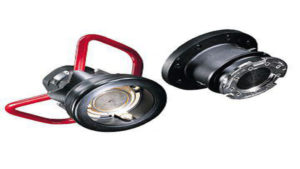
A coupling is a device that connects two elements and enables the transfer of motion from one element to another. The elements here are normally the shafts. Therefore, a shaft coupling is a mechanical device that connects rotating shafts and absorb any misalignment between them. Shaft couplings can both be rigid and flexible, depending on the needs and requirements of the system. Power or torque can be transmitted between two rotating shafts in motors and pumps. Make the most of reliable Todo coupling services.
A flexible shaft coupling transmits torque to the machine that has to be operated. The design of a coupling should be such that it helps transmit maximum torque from the driver to the device without the requirement of any extraneous pressure or force.
There are various different types of couplings and each one of them have different tolerance levels of misalignment and position change.
Some of the commonly used couplings are beam couplings, bellow couplings, chain couplings, jaw couplings, diaphragm couplings, disc couplings, gear couplings, Todo coupling and grid couplings.
The misalignment accommodation of these couplings is stated in degrees. Some of the general applications of couplings are:
- Transmission of power from the driver to the device.
- . Connection of two different components of a machine that have been manufactured together.
- . Provide extra flexibility for the transmission of power in cases where there are restrictions of space.
- . To provide protection from overloading in machines.
- . Flexible couplings reduce the shock on the shafts that transmit power in heavy machines.
High performance couplings have been specifically designed to fulfil the requirements of high performance equipment and machines. These couplings can have speeds as high as 30,000 rev/min.
Certain factors that you should keep in mind while selecting a flexible coupling are:
- The machine that it will be transmitting the power to. The prime mover is of utmost significance while selecting a flexible coupling, whether it is an electric motor or diesel engine.
- Torque requirements. The torque requirements of the system or device that needs to be driven also needs to be taken care of. Here you are not concerned about the stated horsepower as much as you are concerned about the torque requirements.
- Shaft sizes. The shaft sizes also play a role in deciding the type of flexible coupling you should use for your machines. The fit between the shafts should also be taken into consideration.
- Shaft misalignment. Shaft misalignment is the most important factor to be taken into consideration while selecting flexible couplings.
Even when you have taken all these basic factors into consideration, there are certain other things that should be taken into account. These include, maintenance, lubrication, ease of installation and other such factors.
Every flexible coupling that you buy has its own pros and cons. You need to weigh all of them to decide which one is best for you and your machine. Your aim should be to buy the best coupling that is suited to your budget.


Leave a Reply